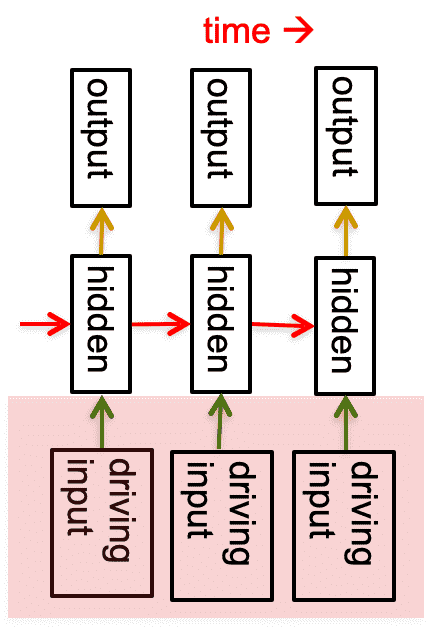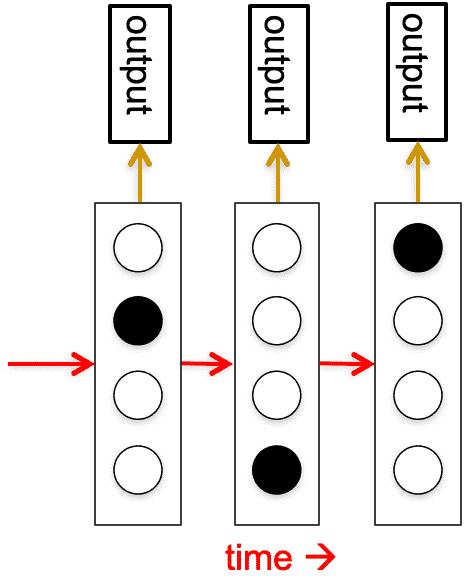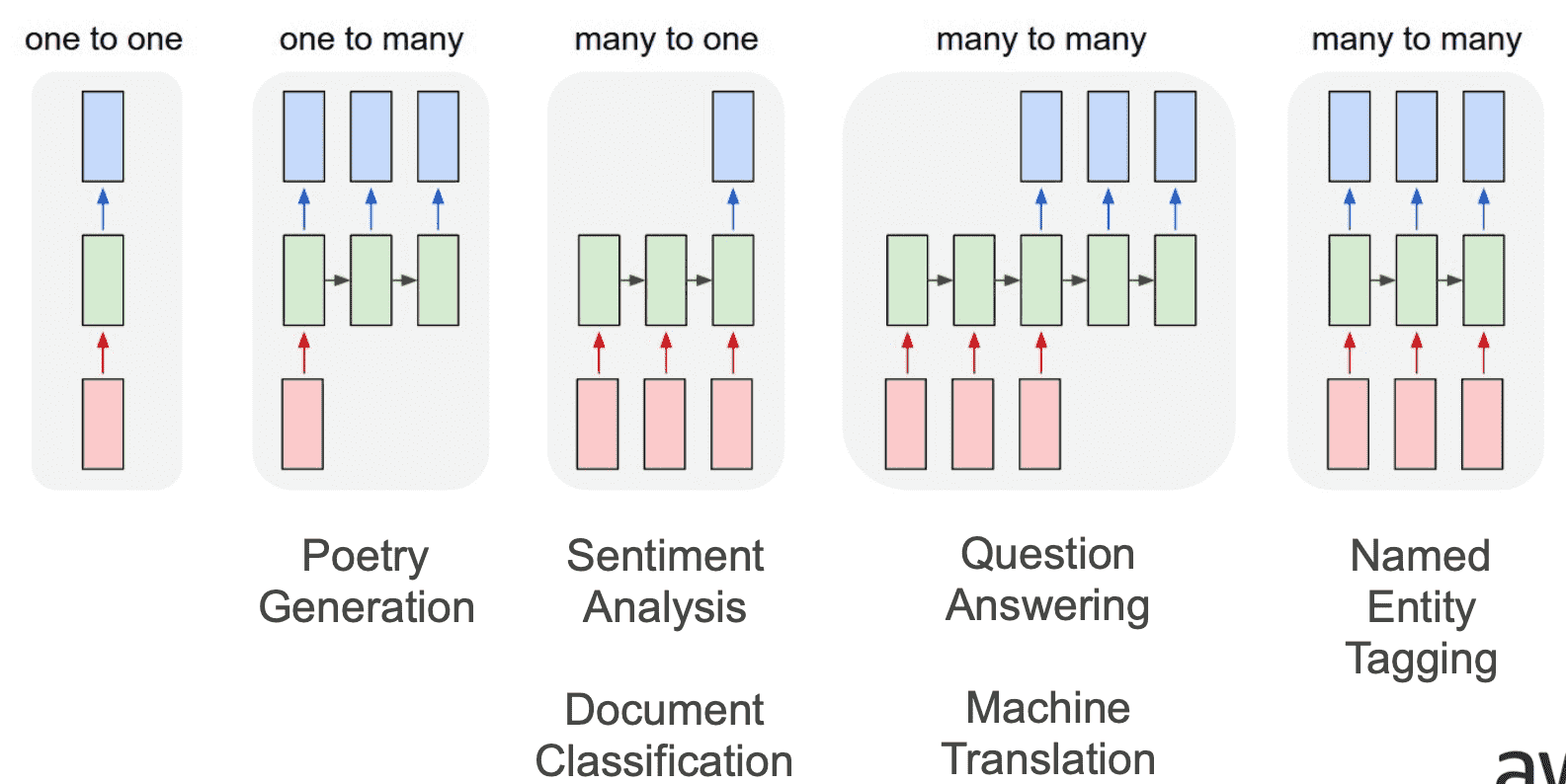Sequence Models¶
Consider a phenomenon where an observation is determined by its past values, eg: any time series variable, such as weather, precipitation, etc.
Why not regular ANN?¶
- ANN requires fixed number of input & output neurons.
- However, with sequential data, we do not know the length of the input
- theoretically, we could convert all inputs to fixed size by padding shorter sentences, but this is infeasible
- ANN does not care about order of input
Memoryless Models¶
Auto-Regressive Model¶
Predict next term in a sequence from a fixed number of previous terms using ‘delay taps’

Markov Assumption-based Auto-Regressive Model¶
Assume that only a limited past upto time period \(\tau\) affects the present value

We predict the next step and iterate.
Feed-Forward Network¶
Generalized auto-regressive models with one/more layers of non-linear hidden units

Memory Models¶
Generative models
Linear Dynamic Systems (Stochastic)¶
Real-valued hidden state that cannot be observed directly
Hidden state has linear dynamics with Gaussian noise and produces the observations using a linear model with Gaussian noise. However, there may also be driving inputs.
A linearly transformed Gaussian is a Gaussian. So the distribution over the hidden state given the data so far is Gaussian. It can be computed using “Kalman filtering”.

Hidden Markov Models (Stochastic)¶
have a discrete one-of-N hidden state
Transitions between states are stochastic and controlled by a transition matrix. The outputs produced by a state are stochastic. We cannot be sure which state produced a given output. So the state is “hidden”. It is easy to represent a probability distribution across N states with N numbers.
To predict the next output we need to infer the probability distribution over hidden states. HMMs have efficient algorithms for inference and learning.

Limitations¶
At each time step it must select one of its hidden states. So with N hidden states it can only remember \(\log(N)\) bits about what it generated so far.
Latent Variable Model/RNN (Deterministic)¶
layered, feed-forward net with shared weights
Next page
Language Modelling¶
Inputs are tokens, not necessarily real numbers
For eg: Consider the sentence Statistics is fun. We can model it as:
Applications¶

Named Entity Tagging is when we identify the entities in a input sequence. For eg: Kelly worked at Google; Kelly is a person and Google is an organization.